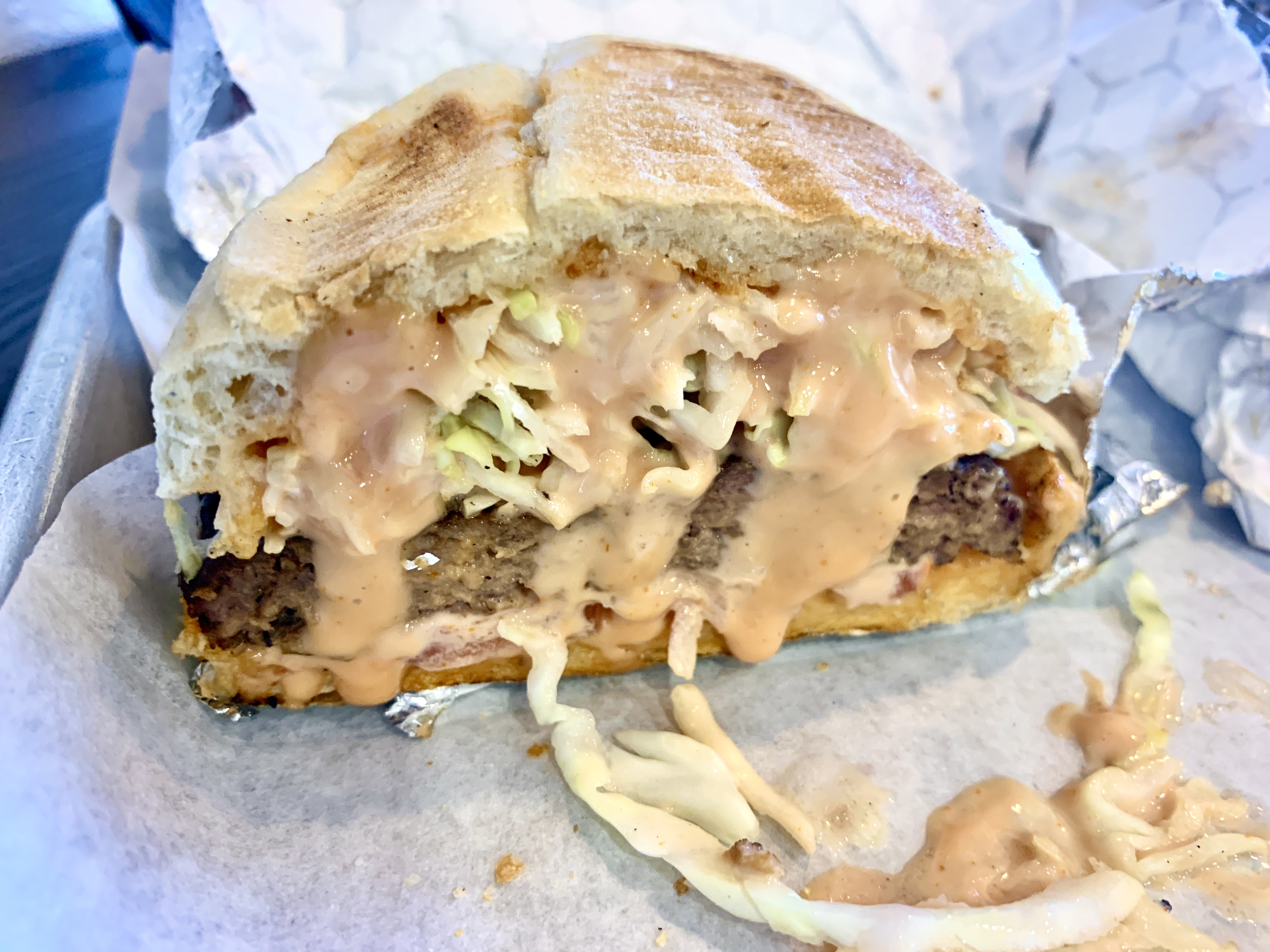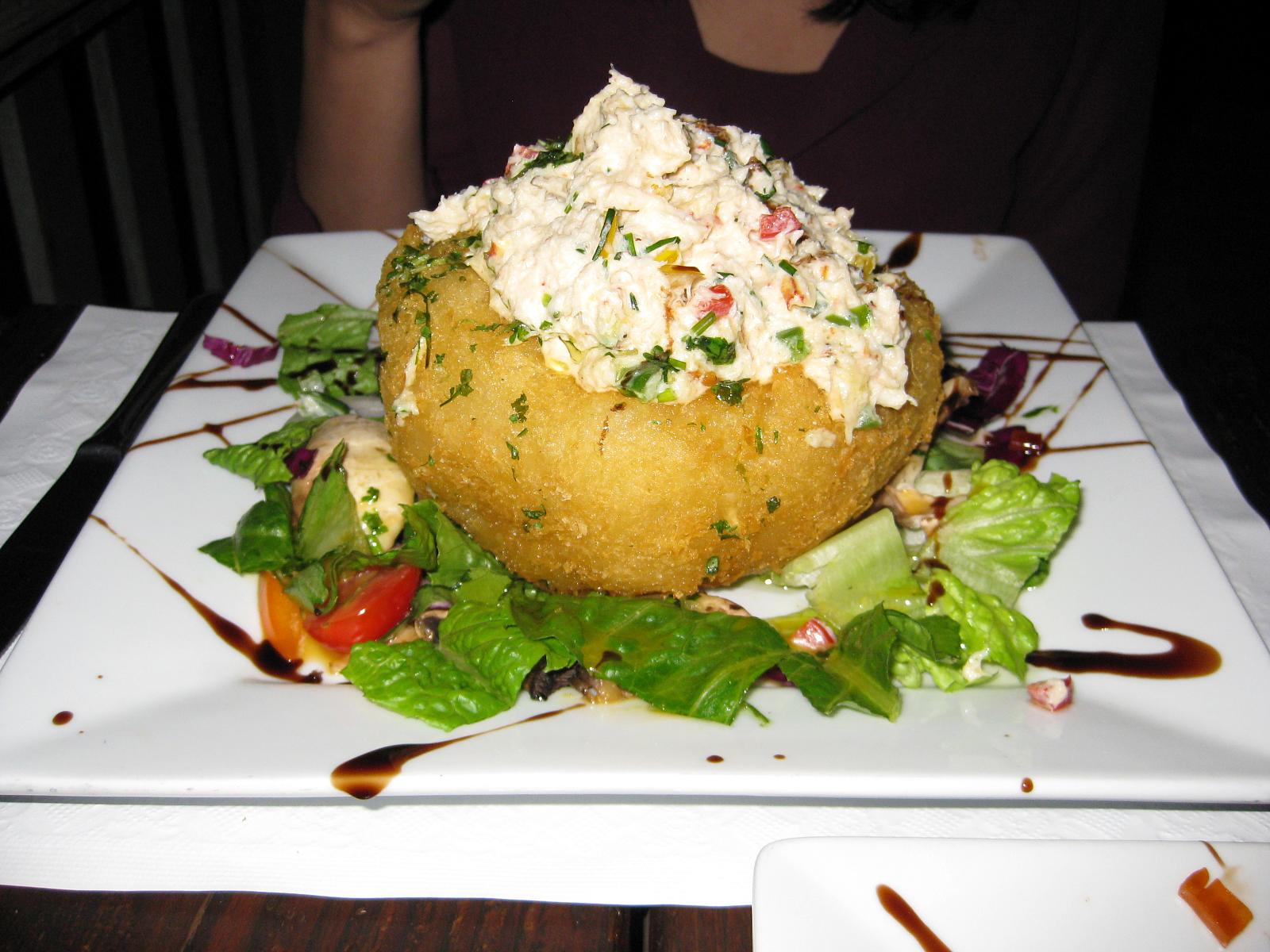|
Mangú
Mangú is the Dominican Republic, Dominican Republic's national breakfast. This traditional Dominican dish can also be served for lunch or dinner. Method Mangú is made up of boiled green plantains with or without peel on. When cooked through and soft the peel is removed. Plantains are then mashed with a fork and some water in which they were boiled. The goal is to mash plantains until smooth with some to no lumps. The dish is topped with sautéed red onions that have been cooked with vinegar and oil. Variations ''Los tres golpes'' (the three hits) is the slang name given by Dominicans consisting of fried Dominican-style salami, fried cheese, and fried eggs served alongside mangú. The salami and cheese can be coated in flour before frying for a more crispy texture. Green plantains can be replaced with ripe-plantains, green bananas, or squash. The squash version is known as ''mazamorra''. Etymology Boiled mashed plantains can be traced back to Africans in the Kingdom of ... [...More Info...] [...Related Items...] OR: [Wikipedia] [Google] [Baidu] |
Dominican Republic Cuisine
Dominican cuisine is made up of Spanish, indigenous Taíno, Middle Eastern and African influences. As in Spain, the largest, most important meal of the day is lunch. Its most typical form, nicknamed ''la bandera'' ("the flag"), consists of white rice, red beans and meat (beef, chicken, pork, or fish), sometimes accompanied by a side of salad. Dishes and their origins The Dominican Republic was formerly a Spanish colony. Many Spanish traits are still present in the island. Many traditional Spanish dishes have found a new home in the Dominican Republic, some with a twist. African and Taíno dishes still hold strong, some of them unchanged. All or nearly all food groups are accommodated in typical Dominican cuisine, as it incorporates meat or seafood; grains, especially rice, corn (native to the island), and wheat; vegetables, such as beans and other legumes, potatoes, ''yuca'', or plantains, and salad; dairy products, especially milk and cheese; and fruits, such as oranges, ba ... [...More Info...] [...Related Items...] OR: [Wikipedia] [Google] [Baidu] |
Fufu
Fufu (or fufuo, foofoo, foufou ) is a dough-like food found in West African cuisine. In addition to Ghana, it is also found in Sierra Leone, Guinea, Liberia, Cote D'Ivoire, Benin, Togo, Nigeria, Cameroon, the Democratic Republic of Congo, the Central African Republic, the Republic of Congo, Angola and Gabon. It is often made in the traditional Ghanaian, Ivorian, Liberian, and Cuban method of separately mixing and pounding equal portions of boiled cassava with green plantain or cocoyam, or by mixing cassava/plantains or cocoyam flour with water and stirring it on a stove. Its thickness is then adjusted to personal preference, and it is eaten with broth-like soups. Some countries, particularly the Igbo tribe in Nigeria, have a version of fufu (Akpu) made from fermented cassava dough that is eaten with thick textured stews. Other flours, such as semolina, maize flour, or mashed plantains, may take the place of cassava flour. FuFu is traditionally eaten with the fingers, and a smal ... [...More Info...] [...Related Items...] OR: [Wikipedia] [Google] [Baidu] |
Latin American Cuisine
Latin American cuisine is the typical foods, beverages, and cooking styles common to many of the countries and cultures in Latin America. Latin America is a highly diverse area of land whose nations have varying cuisines. Some items typical of Latin American cuisine include maize-based dishes arepas, pupusas, tacos, tamales, tortillas and various salsas and other condiments (guacamole, pico de gallo, mole, chimichurri, chili, aji, pebre). Sofrito, a culinary term that originally referred to a specific combination of sautéed or braised aromatics, exists in Latin American cuisine. It refers to a sauce of tomatoes, roasted bell peppers, garlic, onions and herbs. Rice and beans are also staples in Latin American cuisine. Latin American beverages are just as distinct as their foods. Some of the beverages can even date back to the times of the Native Americans. Some popular beverages include coffee, mate, hibiscus tea, horchata, chicha, atole, cacao and aguas frescas. Desserts i ... [...More Info...] [...Related Items...] OR: [Wikipedia] [Google] [Baidu] |
Tacacho
Tacacho is a traditional Peruvian meal that is typically served for breakfast. It is popular in the Amazonas region, where the natives boil or grill plantains, peel them, then mash them in a large wooden mortar. When mashed, the plantains are combined with lard, salt, and tiny pieces of pork rind and served with vegetables and chorizo on the side. About.com Origin This dish originated in west Africa. In the Caribbean and parts of South America with large African influences the plantains are boiled or roasted and typically smashed with garlic.See also * * |
Tacacho
Tacacho is a traditional Peruvian meal that is typically served for breakfast. It is popular in the Amazonas region, where the natives boil or grill plantains, peel them, then mash them in a large wooden mortar. When mashed, the plantains are combined with lard, salt, and tiny pieces of pork rind and served with vegetables and chorizo on the side. About.com Origin This dish originated in west Africa. In the Caribbean and parts of South America with large African influences the plantains are boiled or roasted and typically smashed with garlic.See also * * |
Dominican Republic
The Dominican Republic ( ; es, República Dominicana, ) is a country located on the island of Hispaniola in the Greater Antilles archipelago of the Caribbean region. It occupies the eastern five-eighths of the island, which it shares with Haiti, making Hispaniola one of only two Caribbean islands, along with Saint Martin, that is shared by two sovereign states. The Dominican Republic is the second-largest nation in the Antilles by area (after Cuba) at , and third-largest by population, with approximately 10.7 million people (2022 est.), down from 10.8 million in 2020, of whom approximately 3.3 million live in the metropolitan area of Santo Domingo, the capital city. The official language of the country is Spanish. The native Taíno people had inhabited Hispaniola before the arrival of Europeans, dividing it into five chiefdoms. They had constructed an advanced farming and hunting society, and were in the process of becoming an organized civilization. The Taínos also in ... [...More Info...] [...Related Items...] OR: [Wikipedia] [Google] [Baidu] |
Egg (food)
Humans and human ancestors have scavenged and eaten animal eggs for millions of years. Humans in Southeast Asia had domesticated chickens and harvested their eggs for food by 1,500 BCE. The most widely consumed eggs are those of fowl, especially chickens. Eggs of other birds, including ostriches and other ratites, are eaten regularly but much less commonly than those of chickens. People may also eat the eggs of reptiles, amphibians, and fish. Fish eggs consumed as food are known as roe or caviar. Bird and reptile eggs consist of a protective eggshell, albumen ( egg white), and vitellus ( egg yolk), contained within various thin membranes. Egg yolks and whole eggs store significant amounts of protein and choline, and are widely used in cookery. Due to their protein content, the United States Department of Agriculture formerly categorized eggs as ''Meats'' within the Food Guide Pyramid (now MyPlate). Despite the nutritional value of eggs, there are some potential health issues ... [...More Info...] [...Related Items...] OR: [Wikipedia] [Google] [Baidu] |
Dominican Salami
Dominican may refer to: * Someone or something from or related to the Dominican Republic ( , stress on the "mi"), on the island of Hispaniola in the Greater Antilles, in the Caribbean ** People of the Dominican Republic ** Demographics of the Dominican Republic ** Culture of the Dominican Republic * Someone or something from or related to the Commonwealth of Dominica ( , stress on the "ni"), an island nation in the Lesser Antilles, in the Caribbean ** People of Dominica ** Demographics of Dominica ** Culture of Dominica * Dominican Order, a Catholic religious order Schools * Dominican College (other), numerous colleges throughout the world * Dominican School of Philosophy and Theology, Berkeley, California, United States * Dominican University (Illinois), River Forest, Illinois, United States * Dominican University of California, San Rafael, California, United States * Dominican University New York Dominican University New York is a private college in Orangeburg, New ... [...More Info...] [...Related Items...] OR: [Wikipedia] [Google] [Baidu] |
Mofongo
Mofongo () is a Puerto Rican dish with plantains as its main ingredient. Plantains are picked green, cut into pieces and typically fried but can be boiled or roasted, then mashed with salt, garlic, broth, and olive oil in a wooden pilón (mortar and pestle). The goal is to produce a tight ball of mashed plantains that will absorb the attending condiments and have either pork cracklings (''chicharrón'') or bits of bacon inside. It is traditionally served with fried meat and chicken broth soup. Particular flavors result from variations that include vegetables, chicken, shrimp, beef, or octopus packed inside or around the plantain orb. Origin and history Mofongo's roots lead to the African fufu, mixed with some Spanish and Taíno influences. Fufu is made from various starchy vegetables and was introduced to the Caribbean by Africans in the Spanish New World colonies such as Cuba ''(fufu de plátano'' and ''machuquillo)'', Dominican Republic ''(mangú)'', Haiti ''(Tom Tom)'' and ... [...More Info...] [...Related Items...] OR: [Wikipedia] [Google] [Baidu] |
Queso Frito
Queso frito (English: fried cheese) is a fried cheese dish. It consists of a white, salty cheese with a high melting point called ''queso de freír'' (Spanish: frying cheese), '' queso paisa'', or ''queso fresco'' (fresh cheese) or ''queso blanco'' (white cheese). ''Queso frito'' is made throughout South America, Puerto Rico, the Dominican Republic, and Mexico. See also * Fried cheese Fried cheese is a dish of cheese that is fried in oil. Fried cheese can be dipped in a batter before frying, and can be pan-fried or deep fried. It can be served as an appetizer or a snack. Fried cheese is a common food in Brazil and the Dominic ... References Colombian cuisine Dominican Republic cuisine Nicaraguan cuisine Puerto Rican cuisine Mexican cuisine Cheese dishes {{cheese-stub ... [...More Info...] [...Related Items...] OR: [Wikipedia] [Google] [Baidu] |
Red Onion
Red onions (also known as purple or blue onions in some mainland European countries, though not the UK) are cultivars of the onion (''Allium cepa''), and have purplish-red skin and white flesh tinged with red. They are most commonly used in cooking, but the skin has also been used as a dye. Red onions tend to be medium to large in size and have a sweeter flavor than white or yellow onions due to low levels of pyruvic acid and sulfur compounds. They are often consumed raw (and can be added to salads for color and bite), grilled, or lightly cooked with other foods. Red onions are available throughout the year and are high in flavonoids and fiber (compared to white and yellow onions).Bill Jones Cut red onion can be soaked in cool water for a period of time, and the water can be drained off, resulting in less "bite" and pungency. Varieties Tropea The red onion from Tropea, Italy, (Italian: "Cipolla Rossa di Tropea") grows in a small area of Calabria in southern Italy, Cap ... [...More Info...] [...Related Items...] OR: [Wikipedia] [Google] [Baidu] |
Cayeye
Cayeye is a Colombian cuisine dish made from mashed green guineos, a type of green bananas. It is mainly eaten for breakfast. Cayeye is from the coastal region of Magdalena, Colombia including Ciénaga, Zona Bananera, Santa Marta, Fundación and Aracataca Aracataca (colloquially sometimes referred to as "''Cataca''") is a municipality located in the Department of Magdalena, in Colombia's Caribbean Region. Aracataca is a river town founded in 1885. The town stands beside the river of the same nam .... References {{Reflist Additional sources * MORÓN, Carlos y GALVÁN, Cristina. La cocina criolla. Recetas de Córdoba y regiones de la costa Caribe. Domus Libri: 1996. p. 182. Colombian cuisine Banana dishes ... [...More Info...] [...Related Items...] OR: [Wikipedia] [Google] [Baidu] |




.jpg)